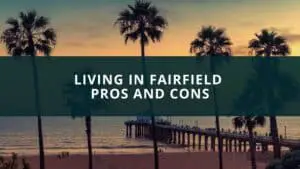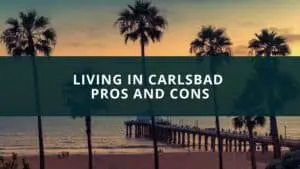Belmont is a city located in the San Francisco Bay Area in California. It is located in the western part of the county, on the San Francisco Peninsula. Belmont is part of the Silicon Valley and is home to many high-tech companies. The city has a population of about 26,000 people.
Belmont is a quiet, affluent city with a strong sense of community. The city is known for its excellent schools and its beautiful views of the San Francisco Bay. There are plenty of things to do in Belmont, from hiking and biking in the many parks, to shopping and dining in the downtown area.
If you’re looking for a peaceful and prosperous place to live, Belmont is the perfect city for you.
Quick navigation
1. Downtown Belmont
Downtown Belmont is a bustling community located in the heart of the Bay Area. This vibrant neighborhood is home to a variety of businesses, restaurants, and cultural attractions. Downtown Belmont is also a great place to live, with a variety of housing options available. Whether you’re looking for a cozy apartment or a spacious home, you’re sure to find the perfect place to call home in Downtown Belmont.
2. The Presidio
The Presidio of San Francisco is a park and former U.S. Army military fort on the northern tip of the San Francisco Peninsula in San Francisco, California, and is part of the Golden Gate National Recreation Area.
The Presidio was originally a Spanish military installation built in 1776. It later became a Mexican fort before it was ceded to the United States in 1848. The Presidio was active during multiple wars, including the Mexican-American War, the American Civil War, and the Spanish-American War. It was also the site of the infamous 1906 San Francisco earthquake.
The Presidio is now home to various museums, parks, and other cultural institutions. It is also a popular tourist destination, with millions of visitors each year.
3. North Beach
North Beach is a neighborhood in San Francisco, California, United States. It is located north of Chinatown and Telegraph Hill. It has historically been home to a large Italian American population and is today known for its numerous Italian restaurants, cafes, and bakeries. It is also home to City Lights Bookstore and the Beat Generation and the counterculture movements.
The neighborhood is bounded by Broadway to the north, Powell Street to the south, Stockton Street to the east, and the San Francisco Bay to the west. The precise boundaries of the North Beach neighborhood are not well-defined, but it generally includes the area north of Broadway and south of Powell Street.
The name “North Beach” was coined in 1875 by developer E.D. Sawyer in an attempt to attract more residents to the area. Sawyer envisioned North Beach as a quiet residential neighborhood, but it soon became a bustling commercial district.
In the early 1900s, North Beach was the center of the San Francisco Renaissance, a period of intense cultural and literary activity. The neighborhood was home to such literary figures as Jack London, Mark Twain, and Dashiell Hammett. North Beach was also the birthplace of the Beat Generation, and it remained an important center of the counterculture in the 1960s and 1970s.
Today, North Beach is a vibrant and diverse neighborhood that is home to a variety of businesses, restaurants, and cultural attractions.
4. Russian Hill
Russian Hill is a neighborhood in San Francisco, California. It is one of the city’s most famous and popular tourist destinations. The neighborhood is located on a hill in the north of the city, just south of Nob Hill. It is bordered by Chinatown to the south and by North Beach to the north.
The neighborhood is home to many of the city’s most iconic landmarks, including the world-famous Cable Cars, the Lombard Street crooked street, and the Coit Tower. There are also a number of parks and green spaces in the area, providing residents and visitors with a chance to relax and enjoy the views.
Russian Hill is a lively and vibrant neighborhood with something to offer everyone. Whether you’re looking for a place to enjoy the city’s views, to experience its history and culture, or to simply relax and enjoy the company of friends, Russian Hill is the perfect destination.
5. Telegraph Hill
Telegraph Hill is a neighborhood in San Francisco, California. The hill is one of San Francisco’s 44 hills, and one of its original Seven Hills. The San Francisco Chronicle defines the Chinatown, North Beach, and Telegraph Hill areas as bounded by Sacramento Street, Taylor Street, Bay Street, and the water.
Telegraph Hill is a neighborhood steeped in history. One of the city’s most recognizable landmarks, Coit Tower, looms over the top of Telegraph Hill. The tower was built in 1933 as a gift to the city from Lillie Hitchcock Coit, a wealthy socialite who loved to chase fires.
The hill has always been a popular spot for visitors and locals alike. The views from the top of the hill are some of the best in the city, and on a clear day, you can see all the way to the Golden Gate Bridge.
In recent years, Telegraph Hill has become home to a number of high-end restaurants and boutiques, adding a touch of sophistication to the neighborhood.
If you’re looking for a taste of old-school San Francisco, Telegraph Hill is definitely the place to be.
6. Nob Hill
Nob Hill is a neighborhood in San Francisco, California. It is one of the city’s 44 hills, and one of its original “Seven Hills”. It is named after the wealthy Nobility of San Francisco in the 1800s.
The neighborhood is bounded by California Street to the north, Powell Street to the south, Kearny Street to the east, and Van Ness Avenue to the west.
The neighborhood is home to Grace Cathedral, the cable car turntable, and the Mark Hopkins Hotel.
7. Financial District
The Financial District of California is located in the heart of downtown Los Angeles. It is the financial and business center of the city, and is home to the Los Angeles Stock Exchange. The district is also home to many of the city’s tallest buildings, including the US Bank Tower and the California Plaza.
8. Chinatown
Chinatown is a neighborhood in San Francisco, California, and is the oldest and largest Chinatown in North America. It is the center of Chinese culture in the United States and is home to a large number of Chinese immigrants and Chinese-Americans. Chinatown is also a popular tourist destination, and is filled with Chinese restaurants, shops, and temples.
9. South of Market
South of Market is a neighborhood in San Francisco, California, that has been undergoing urban gentrification since the 1990s. It is still home to a diverse population of artists, musicians, entrepreneurs and tech workers, but has also become a popular destination for young professionals and families. The area is well-connected to the rest of the city by public transportation and is within walking distance of many of San Francisco’s best-known attractions.
10. Castro District
The Castro District is a neighborhood in San Francisco, California. It is bounded by Market Street to the south, Haight Street to the north, Castro Street to the east, and Divisadero Street to the west. The neighborhood is named after its main street, Castro Street, which in turn was named for José Castro, who was the alcalde (mayor) of San Francisco from 1835 to 1836.
The Castro was one of the first gay neighborhoods in the United States. It became the center of the gay rights movement in the 1960s and 1970s. The neighborhood is still home to a large gay population and is known for its lively and colorful streetscape. The Castro District is also home to a number of businesses and organizations that serve the LGBT community.
The Castro District is located in the Eureka Valley, a neighborhood that is also sometimes referred to as the Castro. The neighborhood is situated on the eastern side of San Francisco’s Mission Dolores neighborhood. It is bordered by the Duboce Triangle neighborhood to the south, Noe Valley to the southwest, the Haight-Ashbury neighborhood to the northwest, and the Mission District to the northeast.
The Castro District is served by several Muni bus lines, including the 22 Fillmore, 24 Divisadero, 33 Stanyan, and 35 Eureka. The neighborhood is also served by the Castro Street Station, a light rail station on Muni’s J-Church line.
The Castro District is a vibrant and lively neighborhood with a unique history and culture. The neighborhood is home to a diverse population and is known for its acceptance and support of the LGBT community. The Castro District is an excellent place to live, work, and play.



